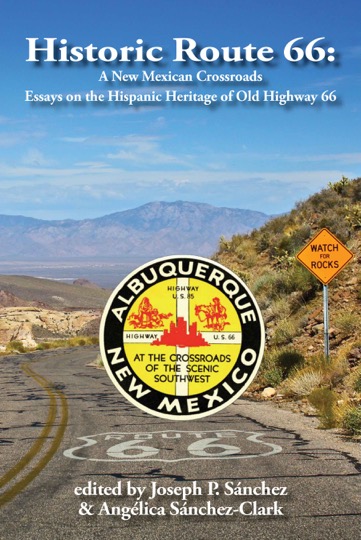Historic Route 66: A New Mexican Crossroads
Essays on the Hispanic Heritage of Old Highway 66
by Joseph P. Sánchez & Angélica Sánchez-Clark
292 pages 23 illustrations; 6 x 9 ISBN 978-1-943681-05-1 ($18.95pb)


The history of Historic Route 66 is much more than a line on a map; it is about the heritage of a people who lived along it. The essays in this book narrate the history of how the portion of Highway 66 through New Mexico came to be, but they also tell about the people who used it as a life line for medical purposes, foodstuffs, and commerce as well as for the transport of livestock and things. Theirs are the human-interest stories that shaped the significance of Historic Route 66 as a part of our national heritage.
This book resulted from a preliminary study carried out by the Spanish Colonial Research Center at the University of New Mexico to highlight the role of Hispanics as participants in the historical process that generated the heritage of Historic Route 66 as a part of our national story. Their stories are a part of a broader history that involves untold histories of other Hispanic communities along the route in Texas, Arizona, and California. Indeed, there are many stories along the entire route of Historic Route 66 from Chicago to Los Angeles that need to be remembered and preserved.
The corridor, through which ran Highway 66, emerged from the mists of prehistory. Yet, like so many places with Native American trails across the United States, Europeans modified them to fit the technology and needs of the times. The land and its uses predated Highway 66 by centuries. Since the end of the sixteenth century, Hispanic settlers and their descendants broadened and extended those pathways to connect towns, farms, and ranches. In many ways, Hispanics, through town founding, set the pattern for several transportation corridors and their attendant junctions at trails that would be used well into the modern day. Today's Big I in Albuquerque that forms the crossroads between I-25 and I-40 is a part of that story. The significance of the cultural heritage of the corridor along Historic Route 66 cannot be understated. Its history began long before 1916 when the U.S. Congress passed legislation to establish a nationwide network of public roads to connect eastern cities with those along the west coast.